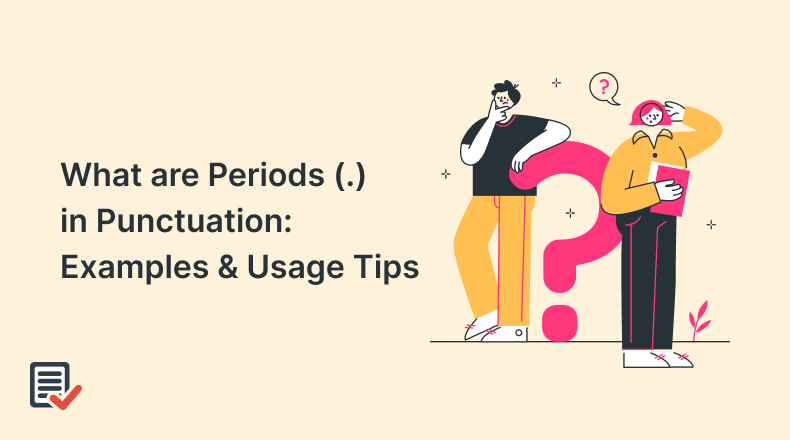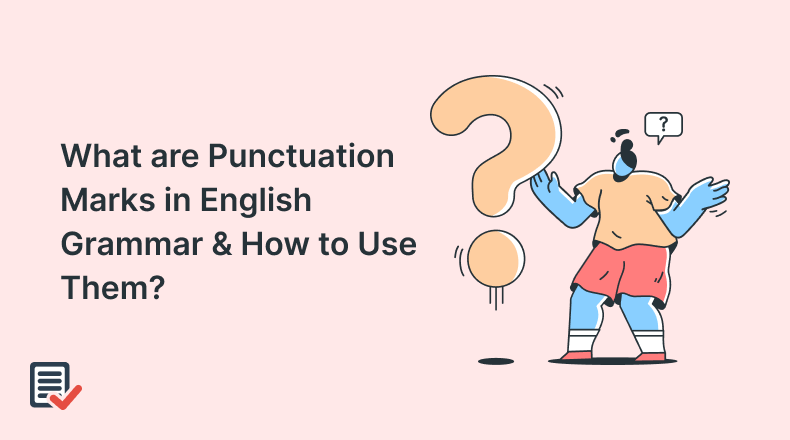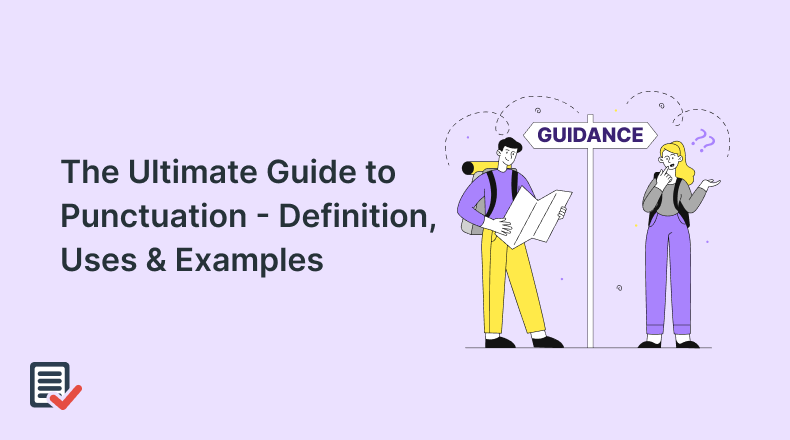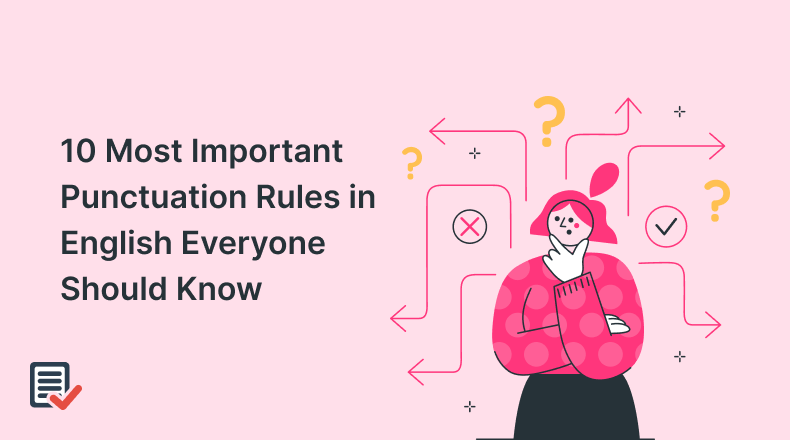
The period (.) seems like a simple punctuation mark, but don’t let its small size trick you! Every time you intend to end a sentence, a full stop or period comes in handy. But that’s not the only job a full stop can do! From abbreviations to decimal points, periods can be used in a number of contexts. However, its placement decides whether the context is right or wrong. This article will help you understand how and where a period should be placed in order to avoid punctuation errors.
What is a Period?
A period or full stop is a punctuation mark used primarily to signal the end of a sentence. Denoted by a dot (.), this commonly used punctuation mark indicates that a thought or statement is complete and signals the reader to pause before moving to the next sentence. Periods are used in different contexts; concluding sentences, separating different statements, in abbreviations, and certain numerical expressions.
Primary Uses of Periods
There are many ways you can incorporate periods into your writing, but the context and placement seal the deal. One wrong placement and your content will be all over the place. Use these ground rules of period placement in writing accurately.
1. Ending Declarative Sentences
Perhaps the most common use, a period is placed at the end of a declarative statement to signal that a thought or idea has been completed. Whenever you end a sentence in writing, place a period at the end is crucial otherwise the information will be misinterpreted.
Example:
“Grace loves to read books.”
“The meeting was scheduled for 3 p.m.”
2. Abbreviations
Periods are also used in abbreviations to signify that a word has been shortened. To save space and time, you can place a period in an abbreviation and get the message through.
Example:
“Dr.” for “Doctor”
“Mr.” for “Mister”
“U.S.” for “United States”
3. Time Notation
Periods are often used to separate hours, minutes, and seconds in numerical form, particularly in some European formats. The accurate use of period in time notation is necessary otherwise the rotations will indicate inaccurate time.
Example:
“The train arrives at 16.30 (for 4:30 PM)”
“The event will start at 15.45 (for 3:45 PM)”
4. Ellipsis with Periods
In punctuation, an ellipsis (…) is a set of three full stops that indicate a pause, an unfinished thought, or an omission in a sentence. A full stop can also be used with an ellipsis. When an ellipsis occurs at the end of a sentence, a fourth period is used to indicate completion. Remember to use only four consecutive periods in this case. Exceeding the number of periods will be inaccurate.
Example:
“She didn’t know what to say next….”
5. Period as Decimal Numbers
In mathematical notations, especially decimal numbers, the period is used to separate the whole number from the fractional part. If you place it wrong, the entire notation becomes inaccurate.
Example:
“The price is $4.99.”
“Jenny scored 89.5 on the test.”
6. The Period as Emphasis
In recent digital communication, a period is generally used sparingly to convey a casual tone. Using the period in an informal setting (text messages, etc) gives a more passive-aggressive undertone rather than a straightforward ending of a sentence. Users generally leave sentences without placing full stops to sound light and fun.
7. Use of Periods in Headlines
Headlines are meant to be short, crisp, and creative. Using periods in a headline can make it feel too final. Try to avoid placing a full stop unless it is in a sentence or necessary in the headline.
Example:
Incorrect: “Co stars Jack and Nicole celebrate New Year’s Eve. Exclusive Pictures.”
Correct: “Co-stars Jack and Nicole celebrate New Year’s Eve, Exclusive Pictures!”
8. Periods in Lists
In case of lists where bullet points or numbers are used, periods are generally not placed unless the items are complete sentences. Remember, in case of incomplete phrases or items, no period is required.
Example:
“Derek went to the store.”
“Jack called me earlier.”
9. In Domain Names and URLs
Full stops are used to separate parts of domain names or website addresses and their extension. This assists in identifying and navigating websites. If you place periods inaccurately, the domain or URL will not load or take you to your desired response.
Example:
“For more information visit us on www.example.com.”
“Visit our site at www.research.org.”
10. In Mathematical Notation
In algebraic expressions, a period is used to indicate certain mathematical notations.
Example:
The area of the parallelogram is 5.5 × 4.2.
The product of the equation is 2.5.
Tips to Use Period (.) and Avoid Common Mistakes
Using full stops sounds pretty easy, however, there are some cases where the use of period results in inaccuracy.
The following are some scenarios where full stop should not be used.
1. Using Period with Question Mark or Exclamation Point
A period, question mark, and exclamation point all signal the end of a sentence. Using a full stop with a question mark or exclamation point is incorrect as it contains unnecessary use of a period.
Example:
Incorrect: “When are we going?.”
Correct: “When are we going?”
2. Placing Period After Heading or Title
Unless the title is a complete sentence, periods are generally not used in headings or subheadings.
Example:
Incorrect: “Best Practices to Quit Smoking.”
Correct: “Best Practices to Quit Smoking”
3. Using Multiple Periods Instead of Ellipses
An ellipsis denoted by three consecutive full stops (…) shows omission or a pause. Using multiple periods in place of an ellipsis is inaccurate.
Example:
Incorrect: “I don’t know what to do……”
Correct: “I don’t know what to do…”
4. Placing Before Opening Parenthesis
In case of a sentence ending with a parenthetical phrase, the period should be placed after the closing parenthesis. Placing it before is incorrect in punctuation.
Example:
Incorrect: “Smythe will meet you at the café (around 3 p.m.).”
Correct: “Smythe will meet you at the café (around 3 p.m.).”
Conclusion:
The period may be a simple punctuation mark, but it plays a vital role in structuring and formatting your content. It is important to understand the diverse uses of periods for enhanced clarity and coherence. Whether you are in a formal or informal setting, a full stop, when used properly, will ensure clarity and coherence.







